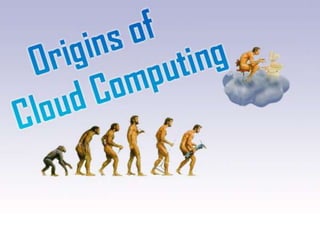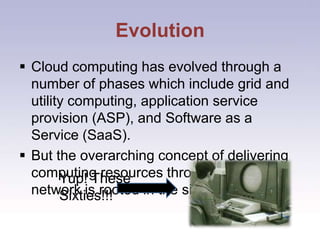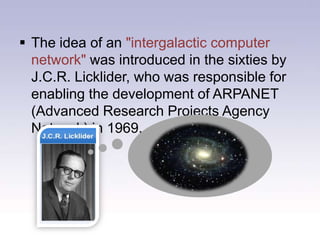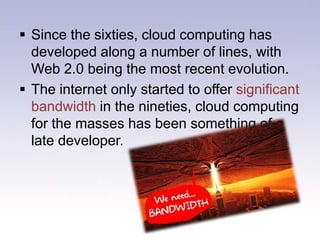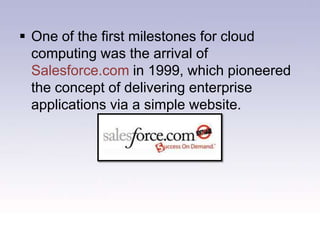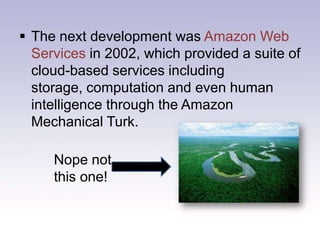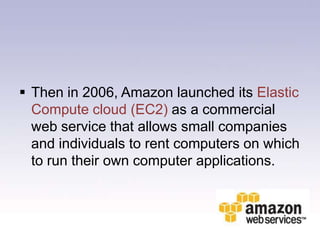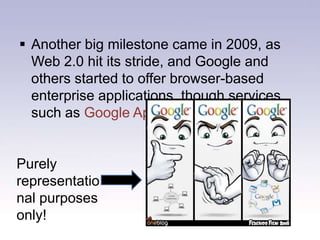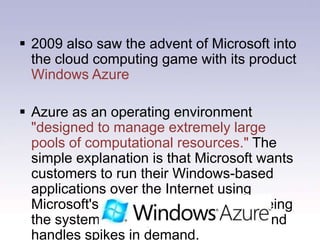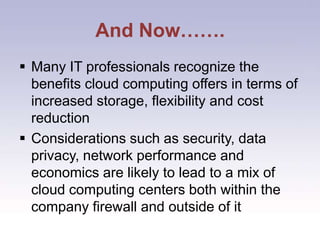Origins of cloud computing
- 2. EvolutionCloud computing has evolved through a number of phases which include grid and utility computing, application service provision (ASP), and Software as a Service (SaaS).
- 3. But the overarching concept of delivering computing resources through a global network is rooted in the sixties.Yup! These Sixties!!!
- 4. The idea of an "intergalactic computer network" was introduced in the sixties by J.C.R. Licklider, who was responsible for enabling the development of ARPANET (Advanced Research Projects Agency Network) in 1969.Since the sixties, cloud computing has developed along a number of lines, with Web 2.0 being the most recent evolution.
- 5. The internet only started to offer significant bandwidth in the nineties, cloud computing for the masses has been something of a late developer.One of the first milestones for cloud computing was the arrival of Salesforce.com in 1999, which pioneered the concept of delivering enterprise applications via a simple website.The next development was Amazon Web Services in 2002, which provided a suite of cloud-based services including storage, computation and even human intelligence through the Amazon Mechanical Turk.Nope not this one!
- 6. Then in 2006, Amazon launched its Elastic Compute cloud (EC2) as a commercial web service that allows small companies and individuals to rent computers on which to run their own computer applications.Another big milestone came in 2009, as Web 2.0 hit its stride, and Google and others started to offer browser-based enterprise applications, though services such as Google Apps. Purely representational purposes only!
- 7. 2009 also saw the advent of Microsoft into the cloud computing game with its product Windows Azure
- 8. Azure as an operating environment "designed to manage extremely large pools of computational resources." The simple explanation is that Microsoft wants customers to run their Windows-based applications over the Internet using Microsoft's data centers, with Azure being the system that organizes resources and handles spikes in demand.Many IT professionals recognize the benefits cloud computing offers in terms of increased storage, flexibility and cost reduction
- 9. Considerations such as security, data privacy, network performance and economics are likely to lead to a mix of cloud computing centers both within the company firewall and outside of itAnd NowâĶâĶ.
- 10. Experts seem to agree that cloud computing will ultimately transform today's computing landscape. Who knows!
- 11. Any Questions?Check out our Course at Find us on
- 12. Thank YouSourceContent :http://www.computerweekly.comhttp://www.crn.comImages:You guessed it â Google!

